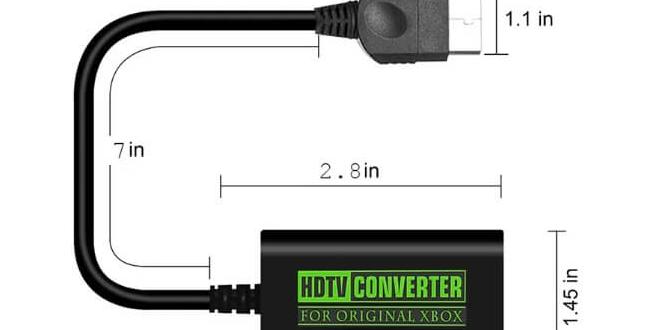Have you ever wondered what keeps your car running smoothly? It’s all about the car battery. A good battery needs the right voltage to work well. But what is a good voltage for a car battery?
Imagine starting your car on a cold morning. You turn the key, and nothing happens. Frustrating, right? This often happens when the battery’s voltage is too low. A typical car battery should have around 12.6 volts when fully charged. If it drops below 12 volts, your car might struggle to start.
Did you know that a car battery’s voltage can change? It can drop when using lights or music. Keeping an eye on your battery’s voltage can save you from problems down the road. We’ll dive deeper into what makes a good voltage for a car battery and how to check it.
What Is A Good Voltage For A Car Battery And Its Importance? A Car Battery Plays A Crucial Role In The Overall Functioning Of A Vehicle. Understanding What Constitutes A Good Voltage For A Car Battery Is Essential For Maintaining Your Vehicle’S Performance And Ensuring Longevity. In This Article, We Will Explore The Ideal Voltage Levels, Common Issues Associated With Improper Voltage, And Tips To Keep Your Car Battery In Optimal Condition. What Is A Good Voltage For A Car Battery? A Good Voltage For A Car Battery Typically Ranges Between 12.4 And 12.7 Volts When The Vehicle Is Off. When The Engine Is Running, The Voltage Should Rise To Approximately 13.7 To 14.7 Volts, Which Indicates That The Alternator Is Functioning Correctly And Charging The Battery. Importance Of Voltage Levels Maintaining The Right Battery Voltage Is Vital For Several Reasons: 1. **Starting Power**: A Voltage Below The Optimal Range Can Lead To Difficulties In Starting The Engine. 2. **Component Functionality**: Many Electronic Components In Modern Vehicles Require A Consistent Voltage Supply. Fluctuations Can Lead To Malfunctioning Systems. 3. **Battery Life**: Keeping The Voltage At An Ideal Level Will Prolong The Lifespan Of The Car Battery, Helping You Avoid Unexpected Breakdowns. Common Issues With Low Voltage 1. **Sulfation**: Batteries That Consistently Operate Below 12.4 Volts May Experience Sulfation, Where Lead Sulfate Crystals Form And Reduce Efficiency. 2. **Electrical System Malfunctions**: Low Voltage Can Trigger Warning Lights And Affect The Vehicle’S Electronic Systems. 3. **Increased Wear And Tear**: A Battery Operating Below Optimal Voltage Can Lead To Increased Wear On The Starter Motor And Other Components. Diagnosing Voltage Issues To Ensure Your Car’S Battery Is Operating At An Optimal Voltage, Consider The Following Steps: 1. **Multimeter Test**: Use A Multimeter To Measure The Voltage At The Battery Terminals. A Reading Below 12.4 Volts Requires Attention. 2. **Load Testing**: Conduct A Load Test To Assess The Battery’S Ability To Hold Voltage Under Typical Operating Conditions. 3. **Check Alternator**: If The Voltage Is Low While The Engine Is Running, There May Be An Issue With The Alternator. Tips For Maintaining Good Voltage – **Regular Inspections**: Frequently Check Battery Terminals For Corrosion And Ensure Tight Connections. – **Charge When Needed**: If The Car Is Not Used Often, Consider Using A Trickle Charger To Maintain Voltage. – **Stay Aware Of Signs**: Watch For Signs Of A Weakening Battery, Such As Slow Engine Cranking Or Dimming Lights. Conclusion Understanding What Is A Good Voltage For A Car Battery Is Essential For Maintaining Your Vehicle In Peak Condition. Regular Checks And Preventive Measures Can Greatly Enhance The Longevity And Reliability Of Your Car’S Battery. Always Stay Proactive In Addressing Voltage Issues To Ensure Smooth And Safe Driving Experiences.
What is a Good Voltage for a Car Battery?
Knowing the right voltage for a car battery is key for keeping your vehicle running smoothly. A healthy car battery should show around 12.6 volts when fully charged. If it drops below 12.4 volts, it may be weak. Have you ever wondered why your car won’t start? It might be due to low voltage! Always check your battery’s voltage to avoid surprises. Keeping an eye on it can save you from getting stranded.Normal Voltage Range for Car Batteries
Definition of healthy voltage levels for leadacid batteries. Comparison with other battery types (lithiumion, AGM, etc.).A healthy lead-acid car battery usually has a voltage range between 12.4 to 12.7 volts when fully charged. If it drops below 12.0 volts, it’s time for a jump or a new battery. Compared to lithium-ion and AGM batteries, which often hover around 13.0 to 14.6 volts, lead-acid batteries take things a little easier. Once you know this, you’ll be a battery voltage pro! Just think of it like checking if your car is “awake” or still in sleep mode.
| Battery Type | Normal Voltage Range |
|---|---|
| Lead-Acid | 12.4 to 12.7 volts |
| Lithium-Ion | 13.0 to 14.6 volts |
| AGM | 12.8 to 13.2 volts |
Voltage Measurement Techniques
Instructions on how to measure battery voltage. Tools required for accurate measurements.Measuring battery voltage is simple and helps keep your car running smoothly. First, you need a digital multimeter. This tool gives you the voltage reading. Follow these steps:
- Turn off your car.
- Set your multimeter to voltage (V).
- Connect the red lead to the positive terminal and the black lead to the negative terminal.
- Read the display for the voltage.
For best results, check the battery when it’s not in use. Knowing how to measure voltage can save you from bigger problems!
What tools do you need to measure car battery voltage?
The main tool needed is a digital multimeter. This tool measures voltage accurately. You might also want some gloves for safety. They can help protect your hands from any possible shocks.
Factors Affecting Car Battery Voltage
Influence of temperature on battery performance. Effects of battery age and usage patterns.Several things can change how your car battery works, especially its voltage. For example, temperature plays a big role. In the cold, battery power can drop, making it feel sluggish, like waking up on a Monday morning! On the flip side, hot weather can speed things up but might lead to faster wear and tear. Age matters too! An old battery might lose its zap, even if it’s had a good life. Using your battery often also affects performance. Keep it healthy, and it’ll treat you well!
| Factor | Impact on Battery |
|---|---|
| Temperature | Cold can lower voltage; heat wears it out. |
| Battery Age | Older batteries lose power, like outdated phones! |
| Usage Patterns | Frequent use helps maintain good voltage. |
Signs of Voltage Issues in Car Batteries
Common symptoms of low voltage. Understanding overvoltage risks and implications.When a car battery has voltage problems, you might notice some signs. Low voltage often leads to difficulty starting the engine. You may hear clicking sounds instead of the engine roaring to life. Dim headlights and slow power to gadgets inside the car are also telltale signs. On the other hand, too much voltage can damage the battery. This could cause leaks or even explosions in extreme cases. It’s important to pay attention to these symptoms and act quickly.
What are common symptoms of low voltage in car batteries?
Common symptoms include:
- Engine won’t start
- Clicking sound when turning the key
- Dimming headlights
- Weak power for electronics
What are the risks of overvoltage?
Too much voltage can harm your battery. It might lead to leaks or even battery failure. Always check your battery voltage regularly for safety.
Maintaining Optimal Voltage Levels
Tips for regular battery maintenance. Importance of battery charging cycles.To keep your car battery happy, regular check-ups are key. Aim for a voltage between 12.4 and 12.7 volts when it’s not running. Think of it as a battery spa day! Make sure to charge it every so often. This helps with battery life and performance. Skipping charging cycles is like ignoring your dog’s need for walks – it just doesn’t work! Here are some quick tips to maintain optimal voltage:
| Tip | Frequency |
|---|---|
| Inspect battery connections | Monthly |
| Clean terminals | Every 3 months |
| Charge the battery | As needed |
By following these steps, your battery can last longer, and you might avoid surprises like a dead car on a Monday morning!
When to Replace Your Car Battery
Indicators that your battery needs replacement. How voltage readings can guide your decision.Ever had your car battery act like a drama queen? It’s time to check for signs it’s ready to retire! If your car struggles to start or the lights flicker brighter than a disco ball, it’s a red flag. Voltage readings can help too! A healthy battery should show around 12.6 volts when off and 13.7-14.7 volts when running. Let’s peek at some indicators:
| Indicator | Action Needed |
|---|---|
| Slow engine crank | Consider replacement |
| Dim lights | Check voltage |
| Corrosion on battery terminals | Clean or replace |
| Old battery (3+ years) | Time for a new one |
If your battery is throwing these hints, it might be saying, “I’m outta here!” Time to get a new one before your car leaves you stranded like a bad date!
Conclusion
In summary, a good voltage for a car battery is typically around 12.6 volts when fully charged. It’s important to check your battery regularly. If it drops below 12 volts, you might need a recharge or replacement. You can keep your car running smoothly by doing this. For more tips on battery care, keep reading!FAQs
What Is The Typical Voltage Range For A Fully Charged Car Battery?A fully charged car battery usually has a voltage between 12.6 and 13.8 volts. When you check it, you want to see numbers in this range. If the number is lower, the battery might not be fully charged. So, keeping it in this range helps your car start and run better!
How Can I Measure The Voltage Of My Car Battery Accurately?To measure your car battery’s voltage, you need a multimeter. First, turn off your car. Then, set the multimeter to the DC voltage setting. Next, touch the red probe to the positive (+) side and the black probe to the negative (-) side of the battery. Read the number on the display to know the voltage.
What Are The Signs That Indicate A Car Battery May Be Underperforming Due To Low Voltage?If your car battery is low on voltage, you might notice a few signs. First, the engine may be slow to start or not start at all. Second, your headlights may look dim or flicker while you drive. You might also hear clicking sounds when you try to start the car. If you see any of these signs, it’s time to check your battery!
How Does Temperature Affect The Voltage And Performance Of A Car Battery?Temperature can change how well a car battery works. When it’s really cold, the battery can have less power. This means your car might not start easily. In hot weather, the battery can work better, but it can also wear out faster. So, both hot and cold temperatures can affect your battery’s strength and how long it lasts.
What Actions Should I Take If My Car Battery Voltage Is Consistently Below The Recommended Level?If your car battery voltage is too low, first check the battery connections. Make sure they are tight and clean. Next, try to jump-start the battery with jumper cables and another car. If it still doesn’t work, you may need to get a new battery. It’s also good to visit a mechanic if you’re unsure what to do.
{“@context”:”https://schema.org”,”@type”: “FAQPage”,”mainEntity”:[{“@type”: “Question”,”name”: “What Is The Typical Voltage Range For A Fully Charged Car Battery? “,”acceptedAnswer”: {“@type”: “Answer”,”text”: “A fully charged car battery usually has a voltage between 12.6 and 13.8 volts. When you check it, you want to see numbers in this range. If the number is lower, the battery might not be fully charged. So, keeping it in this range helps your car start and run better!”}},{“@type”: “Question”,”name”: “How Can I Measure The Voltage Of My Car Battery Accurately? “,”acceptedAnswer”: {“@type”: “Answer”,”text”: “To measure your car battery’s voltage, you need a multimeter. First, turn off your car. Then, set the multimeter to the DC voltage setting. Next, touch the red probe to the positive (+) side and the black probe to the negative (-) side of the battery. Read the number on the display to know the voltage.”}},{“@type”: “Question”,”name”: “What Are The Signs That Indicate A Car Battery May Be Underperforming Due To Low Voltage? “,”acceptedAnswer”: {“@type”: “Answer”,”text”: “If your car battery is low on voltage, you might notice a few signs. First, the engine may be slow to start or not start at all. Second, your headlights may look dim or flicker while you drive. You might also hear clicking sounds when you try to start the car. If you see any of these signs, it’s time to check your battery!”}},{“@type”: “Question”,”name”: “How Does Temperature Affect The Voltage And Performance Of A Car Battery? “,”acceptedAnswer”: {“@type”: “Answer”,”text”: “Temperature can change how well a car battery works. When it’s really cold, the battery can have less power. This means your car might not start easily. In hot weather, the battery can work better, but it can also wear out faster. So, both hot and cold temperatures can affect your battery’s strength and how long it lasts.”}},{“@type”: “Question”,”name”: “What Actions Should I Take If My Car Battery Voltage Is Consistently Below The Recommended Level? “,”acceptedAnswer”: {“@type”: “Answer”,”text”: “If your car battery voltage is too low, first check the battery connections. Make sure they are tight and clean. Next, try to jump-start the battery with jumper cables and another car. If it still doesn’t work, you may need to get a new battery. It’s also good to visit a mechanic if you’re unsure what to do.”}}]}






